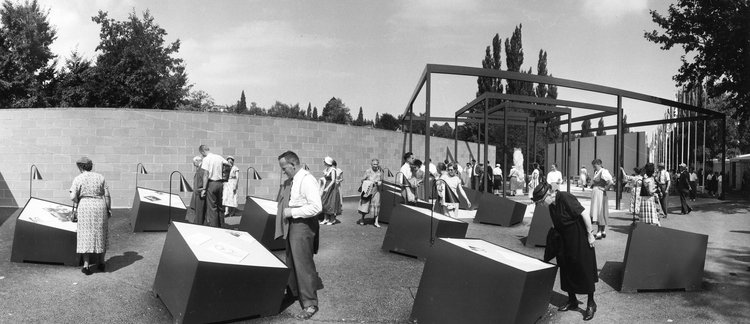The Special Collection Women’s Display: Women’s Exhibitions and Exhibition Design in the 20th Century explores why, how and under what conditions women made exhibitions about the built environment and who these women were – in order to achieve a more comprehensive understanding of the exhibitions themselves and their design across different individuals, collaborative groups, time-periods and geographical contexts. Women were involved in the financing, planning, organizing, critiquing, and staging exhibitions since the 19th century, even though their contributions, aims and impacts are often little known. The articles aim to broaden and diversify the understanding of exhibitions made by women in the 20th century by focusing on subjects whose stories have been forgotten or marginalized in architectural history. For many women, exhibition design was not only an important career step, but also a political and social commitment and a collaborative form of work voicing critique and an experimental laboratory for testing new approaches. Exhibition design proved to be an accessible niche for many woman architects, who discovered in it a chance to gain foothold in the profession and to have a platform to speak out publicly. The exhibition also opened the opportunity of trying out new design concepts and making a theoretical contribution. A series of exhibitions in Switzerland, the Netherlands, Denmark, Russia, Cuba, Canada and the USA during 1920s–1980s are analyzed, taking different approaches to the study of women in architecture, illuminating both individual biographies and collective works in the context of historical and social contingency.
Cover image: Visitors at the SAFFA Exhibition (Schweizerische Ausstellung für Frauenarbeit, or the Swiss exhibition for women’s work) in Zürich, 1958.
Editors: Katia Frey (Guest Editor), Eliana Perotti (Guest Editor), Svava Riesto (Guest Editor)
Editorial
Women's Display: Editorial
Eliana Perotti, Katia Frey and Svava Riesto
Women’s display. Women’s exhibitions and exhibition design in the 20th century
Also a part of:
Research Article
Chloethiel Woodard Smith: Advancing through Exhibitions
Kathleen James-Chakraborty
Women’s display. Women’s exhibitions and exhibition design in the 20th century
Also a part of:
Collections
-
The Two Mediterraneans that Live Apart, Together: Making Architectures and Writing Histories
Women’s display. Women’s exhibitions and exhibition design in the 20th century
Building Civic Identities. Communal Palaces in Italian Urban History (14th-17th Centuries)
Intersecting Practices: Architecture and the Visual Arts in Early Modern Europe - Italy and the Netherlands
The Geopolitical Aesthetic of Postmodernism
Architects as Global Entrepreneurs (1850-2000)
From Ration Cards to Refugee Camps: Architecture, Bureaucracy, and the Global State of Emergency during World War One
Comprador Networks and Comparative Modernities
Architectural Historiography and Fourth Wave Feminism
Marxism and Architectural Theory across the East-West Divide
Resilience in Architectural History
On Style
On the meaning of 'Europe' for Architectural History
Travel
Building Word Image: Printing Architecture 1800-1950
Objects of Belief: Proportional Systems in the History of Architecture
Culture of Crisis
